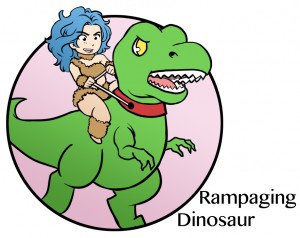Most of us tend to believe that our moods are based on real, tangible things. Things like our commute, the amount of money we have, how we’re feeling, or whether or not the weather outside has finally changed to something associated with summer.
 |
| Pictured: Seattle. In June. |
But what if it wasn’t the big things that determined our moods? What if it were the little, ubiquitous things that surround us every day?
What if a big part of how we felt was determined by the colors around us?
According to wide swaths of the internet that is precisely the case. And, also according to those wide swaths of the internet, given the complete disregard for style and decorating that has governed my existence thus far, I am completely screwed.
 |
| Not Pictured: any sense of color coordination. |
See, essentially the idea is that all colors have meanings and emotions associated with them and provide the background noise to your life. With the wrong color around you might find yourself stressed and depressed all the time and never know why.
Doctors and nurses wear white to imply sterility. Red clothing gets noticed and makes the wearer appear heavier. People are more relaxed in green rooms (hence the term “green room” for people about to go onto a movie or television set). Hospitals use white to imply sterility and cleanliness. People, including weightlifters, are more productive in blue rooms. The list goes on and on.
All of these ideas seem to make sense on the surface.
 |
|
| “Why yes, I do associate white with sterility!” |
But a deeper look at the meanings of colors runs into the same issue of astrological signs: they’re broad enough to cover almost every possibility. Not only is yellow the color of the sun, bright and pleasing, it’s also apparently the most stressful color to be around. People get mad more in yellow rooms and babies cry more. It also speeds metabolism and increases concentration. And while blue is calming and implies trust too much of it causes depression and people to lose their appetite.
 |
| I just don’t know how I feel anymore! |
Now, there have been studies that show that colors can have effects on people on an almost subconscious level. The most commonly referenced one is that of pink, which is supposed to have a calming affect on people and, according to AlexanderG Schauss’ presentation at a conference in 1979 the color has an amazing effect on prisoners. Of course, that idea was presented more than thirty years ago but that hasn’t stopped the idea from taking the world by storm. These days a multitude of prisons are pink (prisons in Texas, Australia and Arizona among them), stressed-out students are exposedto it, and colleges in Iowa paint the visiting team’s locker room in the same rosy shade in the hopes that it will keep them subdued during the game.
Richard Wener, an environmental psychologist at the Polytechnic Institute of New York, told the NY Times that it’s not unusual to see inflated claims like these. ”People love to see a magic bullet,” he said. ”It strikes me as very unlikely that we’ll find such a simple solution to very complex problems. In the real world, we usually find that the magical is fantastical.”
 |
| Wait… you mean magic isn’t real? Shoot. |
But usually even though there is quite a bit of language bandied about regarding “studies” and “researchers,” it’s difficult to find actual scientific studies that document most of these ideas. A lot of “evidence” about colors is anecdotal and usually wrong, such as the supposition that red cars get more tickets.
This only means that the arguments are more vehement. Some say that color psychology is bunk because it’s only the initial exposure to a color that has any effect, prolonged exposure supposedly can often cause the opposite effect. Others argue that color therapy, also known as chromotherapy, can have a profound effect on patients suffering from any number of aliments simply by introducing the patient to the colors they are lacking in various forms including gemstones, lasers, color bath treatments, and wands. The Lüscher color test (developed by Dr. Max Lüscher in Switzerland) goes a step farther, claiming to be able to diagnose patients based on the colors they choose throughout testing.
Unfortunately the waters are only further muddied by the fact that color is a very cultural phenomenon. While white traditionally represents purity in western cultures and is prominent in wedding dresses because of this, traditional Chinese brides associate the color with death and mourning and would thus never wear it.
 |
| No, they get totally awesome red dresses instead. |
This doesn’t mean people don’t take the idea seriously though. Designers argue about whether color has an effect on space, restaurants paint their seats bright red to increase appetite and tableturnover, and marketing departments dither on the precise mix of packaging colors that will lead you to buy their product.
 |
| Will you buy it now? |
Perhaps the most recent official foray into color theory happened in Japan when the Keihin Electric Express Railway Co. changed the lights on the end of their platforms to blue in the hopes that it might reduce the number of suicide attempts. They made the change partially because a similar change in Glasgow supposedly caused a drop in crime in the area.
So far the lights do seem to be having an effect but, as Professor Tsuneo Suzuki at Keio University says, it could just be because they’re different.
“There are a number of pieces of data to prove blue has a calming effect upon people. However, it’s an unusual color for lighting, so people may just feel like avoiding standing out by committing crimes or suicide under such unusual illumination. It’s a little risky to believe that the color of lighting can prevent anything.” (source)
But based on the massive amounts of conflicting evidence, the anecdotal stories, and all the people looking for a magic bullet for their problems, color theory will likely continue to live on for a good long time whether there’s any truth in it or not.
The good news? I totally have the cure to your depression, it’ll only take a couple of Christmas tree lights and a hundred dollars.
 |
| It’ll look something like this. |
